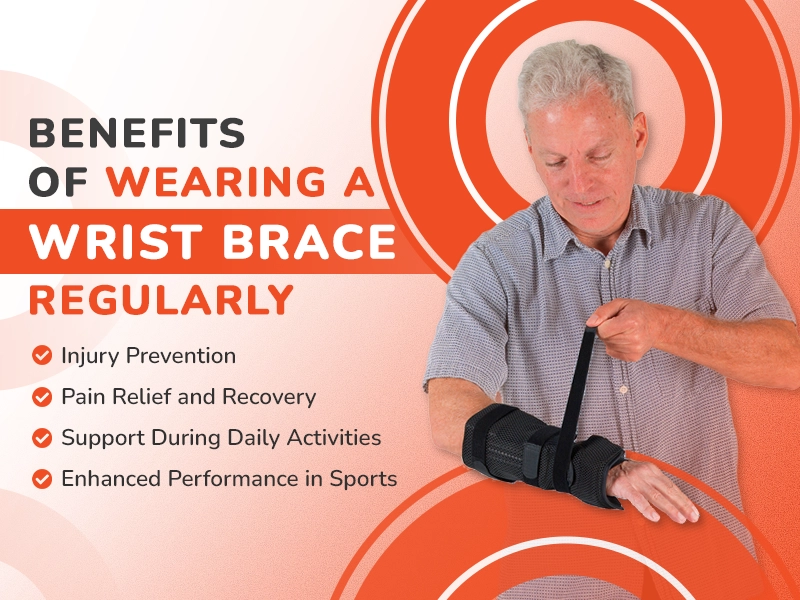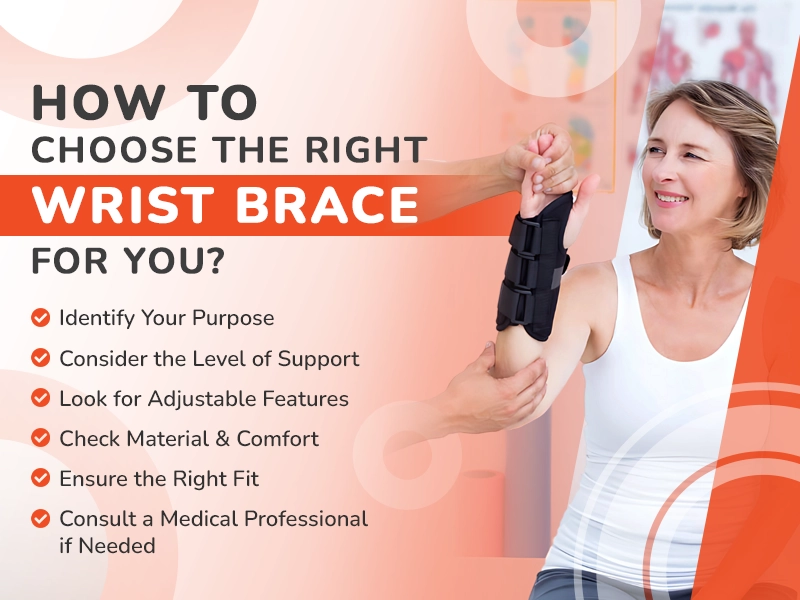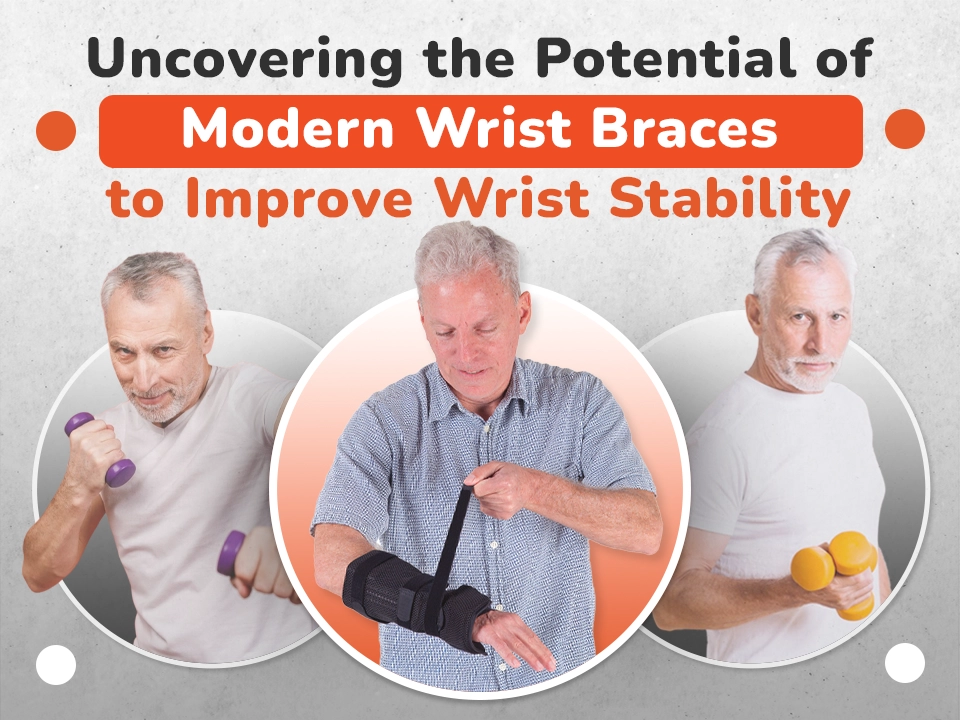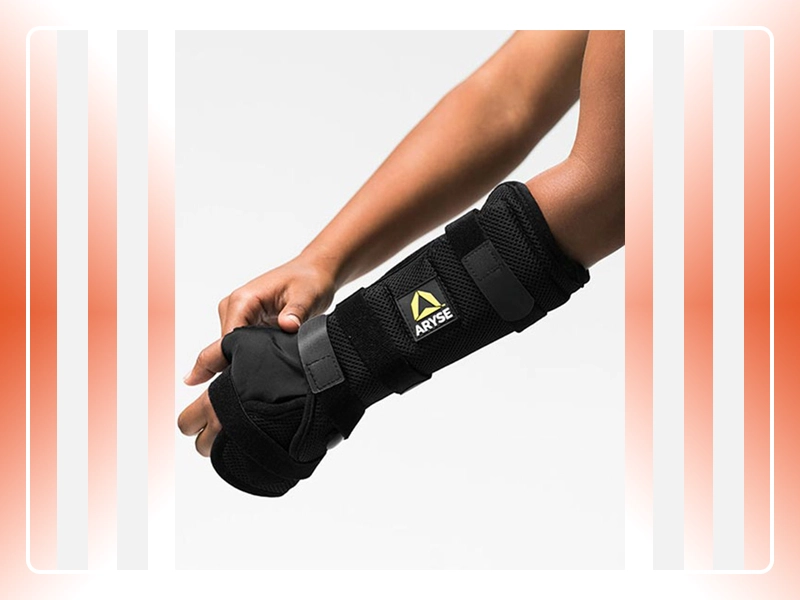Wrist Braces for Everyday Use: Support for Work and Sports
Wrist health plays a crucial role in maintaining productivity and performance, whether you’re working at a desk, engaging in sports, or performing manual tasks. Wrist injuries, such as sprains, strains, and carpal tunnel, are common and can disrupt your daily activities. Wearing a wrist brace can offer essential support, reduce pain, and help prevent further injury. At Heal Medical Supply, we recognize how important it is to protect your wrists, which is why we offer a range of high-quality wrist braces designed to provide comfort and stability throughout your day.
Our wrist braces are carefully crafted to meet the needs of both workers and athletes, offering reliable protection during all types of activities. Whether you’re recovering from an injury or simply looking to prevent one, Heal Medical Supply has a wrist brace for you. With our products, you can enjoy the confidence of knowing your wrists are supported, so you can focus on your tasks and activities without worrying about discomfort or injury. Explore our collection today to find the perfect wrist brace for your needs.
Understanding Wrist Injuries and Strain
Wrist injuries and strain are common issues that can arise from everyday activities, sports, or repetitive motions. These injuries often occur when the wrist is subjected to excessive force, overuse, or improper positioning. Common causes of wrist strain include activities like typing, lifting heavy objects, or participating in sports such as tennis, basketball, or weightlifting. Repetitive motions, like using a computer mouse or performing assembly line work, can also lead to conditions like carpal tunnel syndrome, which affects the nerves in the wrist and causes pain, numbness, and weakness.
When the wrist is injured or strained, it can result in limited mobility and discomfort, making even simple tasks difficult. Without proper care and support, these injuries can worsen over time, leading to chronic pain or long-term damage. A wrist brace helps to stabilize the joint, reduce inflammation, and alleviate pain, allowing the wrist to heal properly. Whether you’re dealing with a sports injury, repetitive strain, or recovering from surgery, wearing a wrist brace provides essential support to help prevent further damage and speed up the recovery process.
Types of Wrist Braces for Different Needs
When it comes to wrist braces, one size does not fit all. Different activities and conditions require different types of wrist support to ensure maximum comfort and effectiveness. At Heal Medical Supply, we offer a variety of wrist braces tailored to meet the needs of both everyday users and athletes. Understanding the different types can help you choose the right wrist brace for your specific requirements.
1. Wrist Braces for Everyday Work:
- For Office Workers: Many office workers, especially those who type or use a mouse for long periods, are at risk of developing repetitive strain injuries like carpal tunnel syndrome. A lightweight, flexible wrist brace can provide the necessary support to reduce pressure on the wrist joint and improve posture during extended computer use.
- For Manual Laborers and Healthcare Workers: For those working in physically demanding jobs, such as healthcare providers, factory workers, or construction workers, wrist braces with extra support and stability are essential to prevent injury from repetitive movements or heavy lifting. These braces offer firm, structured support to protect the wrist from strain and potential injury.
2. Wrist Braces for Sports and Physical Activities:
- For Athletes: Wrist braces designed for sports provide crucial support during physical activities like tennis, basketball, weightlifting, or even yoga. These braces are often more flexible than those used for everyday work but still offer enough support to prevent sprains or strains during dynamic movements.
- For Recovery and Rehabilitation: Athletes recovering from wrist injuries or surgeries need a brace that offers both immobilization and gentle support to promote healing while preventing further damage. These braces are typically more rigid and can be worn for extended periods to ensure the wrist stays protected while it heals.
3. Adjustable and Versatile Wrist Braces:
- Many wrist braces feature adjustable straps and customizable fits, allowing users to fine-tune the level of support they need based on their activity. These versatile braces are perfect for individuals who require wrist support throughout the day, whether for work or sports. With their ability to accommodate various wrist sizes and provide both compression and stabilization, they are an excellent option for those who want convenience and comfort in one product.
Key Features to Look for in a Wrist Brace
When choosing a wrist brace, consider several key features to ensure you get the right support, comfort, and durability for your needs. Whether you’re recovering from an injury, preventing strain, or supporting your wrist during sports, the following factors will help guide your decision.
1. Material and Comfort
Look for breathable, lightweight materials like neoprene that wick moisture and keep your wrist cool. Soft linings and ergonomic designs add extra comfort, especially for extended wear.
2. Adjustability and Fit
A good wrist brace should offer adjustable straps or velcro closures for a customizable fit. This ensures optimal support without being too tight or loose, making it suitable for all wrist sizes and different activities.
3. Durability and Support
Choose a durable wrist brace made from high-quality materials that provide the right level of support. For recovery, look for a more rigid design; for prevention, a flexible option may be more suitable.
4. Flexibility and Range of Motion
Depending on your activity, choose a brace that offers the right balance of support and flexibility. Athletes may need a more flexible design, while those recovering from an injury might need a more rigid option.
5. Ease of Use and Maintenance
Look for a brace that’s easy to put on and remove, with features like velcro straps or a slip-on design. Additionally, machine-washable materials or removable liners make maintenance simpler.
Benefits of Wearing a Wrist Brace Regularly
Wearing a wrist brace regularly offers a variety of benefits, whether you’re looking to prevent injury, recover from an existing condition, or enhance your performance in work or sports. Here are the key advantages:

1. Injury Prevention
Wrist braces provide extra support, reducing the risk of strain or injury, especially during repetitive tasks or physical activities. They stabilize the wrist joint, preventing overextension or sudden movements that could lead to sprains or tears.
2. Pain Relief and Recovery
For those already dealing with wrist pain, such as carpal tunnel syndrome, tendonitis, or sprains, a wrist brace can provide immediate relief. It helps reduce swelling and alleviates pressure on affected areas, allowing for quicker recovery.
3. Support During Daily Activities
Wrist braces are ideal for those who perform tasks that put pressure on the wrist, such as typing, lifting, or sports. The additional support helps you maintain proper alignment and posture, reducing strain during these activities.
4. Enhanced Performance in Sports
Athletes often wear wrist braces to support their wrists during intense physical activity. Whether you’re playing basketball, tennis, or weightlifting, a wrist brace can provide the stability needed to perform at your best while reducing the risk of injury.
Read More: Wrist Braces for Carpal Tunnel Syndrome: Can They Really Help?
How to Choose the Right Wrist Brace for You?
Choosing the right wrist brace is essential for ensuring proper support, comfort, and effectiveness based on your specific needs. Here are the key factors to consider:

1. Identify Your Purpose
- Injury Recovery: If you’re recovering from a wrist injury, look for a rigid or semi-rigid brace that limits movement and maximizes stabilization.
- Pain Relief (Carpal Tunnel, Tendonitis, Arthritis): A compression brace with moderate support helps reduce swelling and relieve discomfort.
- Sports & Physical Activity: Choose a flexible, lightweight brace that allows movement while providing stability during high-impact activities.
- Work & Daily Use: A comfortable, adjustable brace is ideal for typing, lifting, or repetitive motions that cause strain.
2. Consider the Level of Support
- Mild Support: Ideal for minor wrist pain or prevention, often featuring elastic or neoprene materials.
- Moderate Support: Offers compression and some restriction of movement for mild injuries or strain.
- Maximum Support: Rigid braces with splints or stabilizers designed for injury recovery or post-surgery immobilization.
3. Look for Adjustable Features
A good wrist brace should have adjustable straps or Velcro closures for a customizable fit. This ensures the brace stays secure without being too tight or uncomfortable.
4. Check Material & Comfort
- Breathable fabric (like neoprene or mesh) prevents excessive sweating and irritation.
- Padded linings add extra comfort, especially for all-day wear.
- The lightweight design is ideal for active use without restricting movement.
5. Ensure the Right Fit
- Measure your wrist size before purchasing. Some braces are available in small, medium, and large sizes, while others are one-size-fits-all with adjustable straps.
- Make sure the brace provides a snug but comfortable fit—too loose will not provide support, and too tight can cut off circulation.
6. Consult a Medical Professional if Needed
If you have a serious injury, chronic pain, or post-surgical recovery needs, it’s best to consult a doctor or physical therapist for recommendations on the best type of wrist brace for you.
Conclusion
Wrist braces are an essential tool for preventing injuries, relieving pain, and providing support during work, sports, and daily activities. Whether you need a brace for recovery, injury prevention, or improved performance, choosing the right one ensures comfort and long-term wrist health. By selecting a high-quality wrist brace with the right level of support, adjustability, and durability, you can protect your wrists and stay active without discomfort.
At Heal Medical Supply, we offer a wide range of wrist braces designed for all needs—whether you’re an athlete, an office worker, or recovering from an injury. Explore our collection today and find the perfect wrist brace to keep your hands strong, supported, and pain-free!





